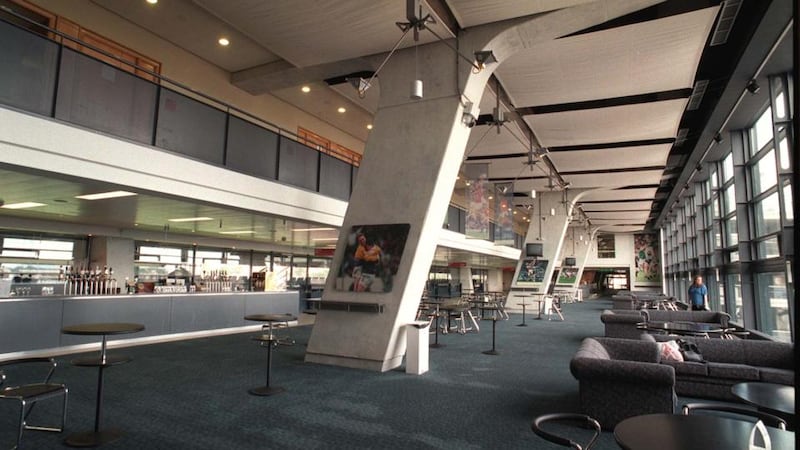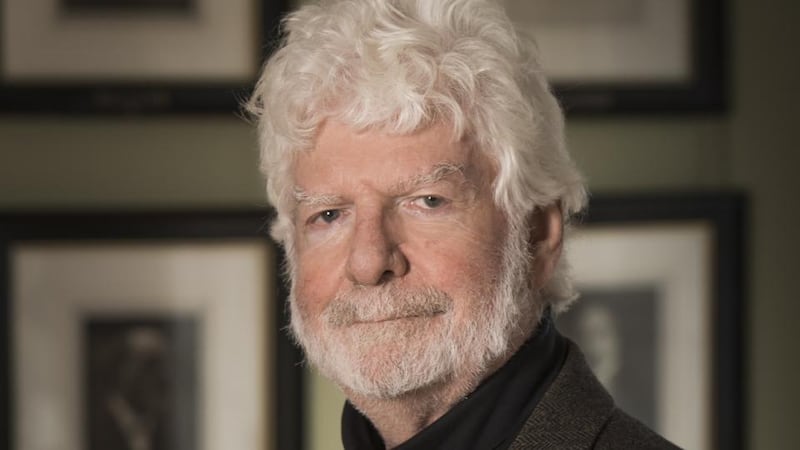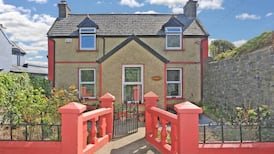Architect Des McMahon continually places emphasis on community and social democracy when discussing his work.
His inclusive nature starts with the James Gandon Medal he has just received from the Royal Institute of the Architects of Ireland (RIAI) for his lifetime achievement in architecture.
He quickly points out that it is as much for the people who worked with him and those who commissioned him.


He ran his practice like a studio, he says.
“I allowed people to have input, and that worked really well and produced some very exciting results.
“ I wouldn’t be receiving this medal if it had not been for the great and talented people who worked in Gilroy McMahon over the years.”
McMahon, a charming man who has on more than one occasion been likened to Father Christmas, left the practice and has since been a president of the Royal Hibernian Academy (RHA). He is now a consultant on art and architecture.
All this gives him a vantage point from which to look back on his career that has now been honoured by the RIAI and, more specifically by Robin Mandal, the current president of the institute, who nominated McMahon for the Gandon Medal.
The award was first made in 2010 and is presented once in each presidency, with Ronnie Tallon getting the medal during Paul Keogh's term and Kevin Roche under Michelle Fagan's.
McMahon's career has taken in his love of sport, art and music, as seen in buildings and venues such as Ballyfermot Senior College, Croke Park stadium, Glór music centre in Ennis and an extension to the Hugh Lane art gallery in Dublin.
“Art has always been extraordinarily central in my life,” says McMahon.
“I don’t know why – I didn’t have an art teacher. Arts are the way I connect when I visit a place.”
Art teacher
After school in his native Co Tyrone, he became an art teacher at St Patrick’s Academy in Dungannon, following his parents into teaching.
“We talked about nothing else but education at home,” he says, identifying, perhaps, the foundation of his focus on society.
He also followed his father, James, on to the GAA pitch, playing football for his county.
But he didn’t feel, with the teaching, that this was it, so he headed south to study architecture at Dublin Institute of Technology, drawn by the visual (“I loved the drawing”) and by architecture’s “importance in social history” from the Greeks, the Romans, the medieval era, “right through”.
But coming “right through” to the 20th century, he wasn’t enamoured of modern icons such as Le Corbusier and Mies van der Rohe.
“They did nothing for me,” he says.
"I couldn't understand the hype. I was attracted to architects from the Netherlands and Nordic countries, such as Aldo van Eyck, Arne Jacobsen, Herman Hertzberger and, in the US, Charles Moore.
“I found it more real. Art is only meaningful if it is a manifestation of a society’s cultural value system.
"The most socially democratic societies in Europe, the Netherlands and Nordic countries, could use that type of architecture. They couldn't have done anything else.
“That was the way they were. They developed a whole new culture of space and light, and equality.”
The love of Nordic culture extended into his personal life when he met and married his Swedish wife, Ance.
After college, McMahon worked for the architectural firm Delany McVeigh and Pike, before joining John Gilroy, who had been his tutor.
After a year, in 1972, they became Gilroy McMahon, “doing kitchens, pubs and small houses”, but a few years later Gilroy was killed in a car crash.
It was traumatic, says McMahon, and he was plunged in at the deep end, even though he felt that “I was more or less a trainee”.
He decided to expand into larger projects by entering competitions. Over the years, the committed staff he cites as sharing his award worked with this policy, often deep into the night.
In 1975, the practice was commissioned to build Ballyfermot Senior College and Library, having been placed third in a schools competition.
“I arm-wrestled with the Department of Education for a year to persuade them to make art an important space in the building,” says McMahon.
“We pin-wheeled the building around the art room.”
He beams at the mention of the Oscar success of Ballyfermot-trained animators.
Response
In giving McMahon the Gandon Medal, the RIAI’s Mandal said: “His belief that the reality of architecture is people’s physical, mental and emotional response to it is clearly seen in all his work.
It lies well in the belief that all we do as architects should be based on serving communities.”
“My real interest is how people respond to architecture,” says McMahon. “What more vivid or honest response would you get than in a school building?
“Children don’t admire architecture, they respond to elements such as space, light, colour, sequence of spaces . . . My success has been about response, by schoolchildren, or in Croke Park, Hugh Lane and the National Museum at Collins Barracks.
How they respond to it emotionally as well as physically in their body language.”
Does he ever go to buildings and watch people? “Oh yes.”
When he was appointed president of the RHA, he sought a new way of representing, and getting people to respond to, architecture as art.
“I was always disappointed with architecture models in exhibitions alongside painting and sculpture. They looked rather desultory,” he says.
“So, over over those five years, I invited young architects to think about how they would show their work.
“I suggested they focus on process rather than product; not on a model of the building they have done, but the process of architecture.”
He cites Taka and Studio Red among the many who did this.
He still combines art and architecture in his role as an independent consultant, “getting away from art just being a token piece stuck in a foyer like a vase of flowers, and creating a language between art and architecture”.
McMahon is alone in winning the RIAI Gold Medal twice, for an extension to DIT Bolton Street and for his work on Croke Park.
The Gandon Medal comes as he is on a new path, grateful for having been able to work in the fields that interested him and for the clients “who provided those opportunities – literally, I was coming from nowhere.
“They took a chance, and [the medal is] wonderful reassurance for them and acknowledges the courage and skill of many people who contributed to the work.
“It’s been thoroughly enjoyable and stimulating and rewarding . . . It wasn’t all a honeymoon: in architecture, you take the rough with the smooth, and grow with it.”










